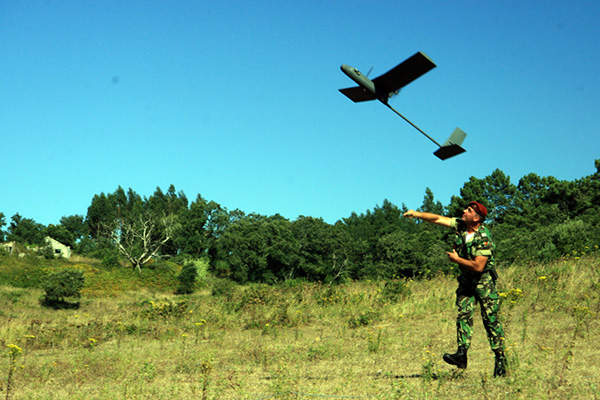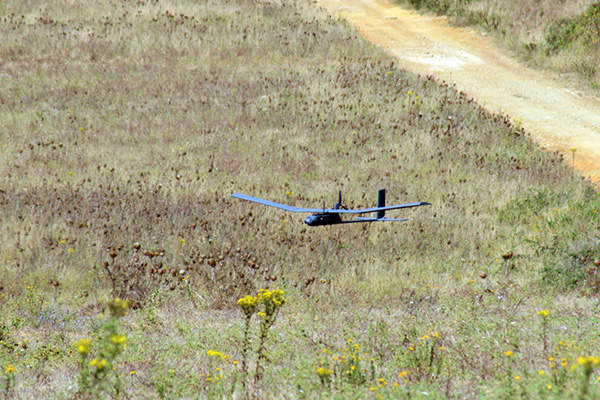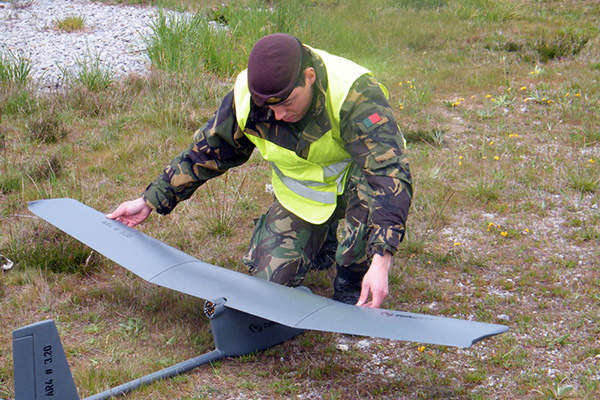
AR4 Light Ray is a fixed-wing mini unmanned aerial system (UAS) designed and manufactured by Portuguese company Tekever Autonomous Systems, to support multiple missions of small tactical military units as well as search-and-rescue (SAR) teams.
The UAS is primarily developed to conduct short-range intelligence, surveillance, target acquisition, and reconnaissance (ISTAR) missions. It can also perform force protection, perimeter security, early warning, battle damage assessment, and tactical communications relay operations. It can be used by dismounted soldiers for identification, recognition, detection and tracking of targets.
The UAS was officially launched at the Farnborough International Air Show 2012 held in Hampshire, UK. It was also demonstrated at the AUVSI Unmanned Systems North America Conference and Exhibition in Las Vegas in August 2012.
In March 2013, the air vehicle performed four technical trials for the Colombian Armed Forces. The UAS successfully demonstrated its ISTAR capabilities at an altitude of around 3,000m in the mountainous region of Bogota.
AR4 Light Ray UAS design and features
The multi-purpose AR4 Light Ray UAS features modular and interchangeable design incorporating a variety of hot-swappable sensor payloads and advanced commmunications suite developed by TEKEVER Communication Systems. It provides infantry units with increased situational awareness under difficult weather and geographic conditions during day as well as night.
Northrop Grumman and Bell Helicopter launched a new medium-range, vertical unmanned aerial system (VUAS) in May 2010 for warfare in the US.
The drone can be quickly deployed and remotely controlled by a two-man team. It can also operate in fully autonomous mode and can be launched by hand or with bungee slingshot. It supports belly or parachute landing.
The aerial vehicle is foldable, man-packable and can be carried in a Ruckscak or 100L Case. It has a length of 140cm, wing span of 180cm and a maximum take-off weight of 5kg, and can carry a payload of 2kg.
Payloads attached to the AR4 Light Ray aerial system
The AR4 Light Ray UAS integrates gimballed payload system in the nose. The payload is stabilised in two axes to provide improved surveillance, target acquisition and tracking capabilities.
The standard payload configuration includes a high-definition electro-optical / infrared (EO / IR) sensor to capture high-resolution imagery and video during the day. The UAV can also be configured with infrared, night vision and low visibility sensors to provide high accuracy during night and in low-light conditions.
The AR4 Light Ray can be fitted with optional payloads for signals intelligence (SIGINT) and communications relay. A global positioning system (GPS) and inertial measurement unit (IMU) are installed to provide guidance and navigation for the aircraft system.
The UAV can be optionally fitted with additional sensors to support precision airdrops or close-quarters combat capabilities.
Ground control station
A mobile ground control station (GCS) is used to operate and maintain the AR4 Light Ray air system using a highly flexible geo-referenced cartographic base. It provides mission planning and control, sensor data acquisition, mission management, training and simulation for the UAS.
A flight management system (FMS) is installed to automate and control in-flight tasks. It also provides pre-determined flight path or trajectory for the UAS.
The drone is equipped with two software defined radio (SDR) digital data links to transmit information and imagery to frontline units in real time. An optional micro Remote Video Terminal (RVT) is also available for receiving data from the AR4.
Performance
The AR4 Light Ray unmanned air system has a cruising speed of 58km/h and an operating range of 20km. It can endure for up to two hours; the endurance can be extended to three hours by equipping the UAS with an additional power system.
The Global Unmanned Aerial Vehicles (UAV) Market 2011-2021
This project forms part of our recent analysis and forecasts of the global Unmanned Aerial Vehicles (UAV) market available from our business information platform Strategic Defence Intelligence. For more information click here or contact us: EMEA: +44 20 7936 6783; Americas: +1 415 439 4914; Asia Pacific: +61 2 9947 9709 or via email.







.gif)
